- Home
- Paul Christopher
Rembrandt's Ghost
Rembrandt's Ghost Read online
Table of Contents
Title Page
Copyright Page
Dedication
Epigraph
Chapter 1
Chapter 2
Chapter 3
Chapter 4
Chapter 5
Chapter 6
Chapter 7
Chapter 8
Chapter 9
Chapter 10
Chapter 11
Chapter 12
Chapter 13
Chapter 14
Chapter 15
Chapter 16
Chapter 17
Chapter 18
Chapter 19
Chapter 20
Chapter 21
Chapter 22
Chapter 23
Chapter 24
Chapter 25
Chapter 26
Chapter 27
EPILOGUE
REMBRANDT’S GHOST
The dark blue Audi pulled onto the wide sidewalk beside the old Strand Station, a shadowy figure at the wheel. Twenty, perhaps thirty seconds and it would be too late. Finn’s roving eyes found a low wrought-iron gate beside a door, a pair of neglected rubbish bins, and a little pile of builders’ junk. God bless you, Miss Turner from Northland High School, wherever you are. Tumble.
‘‘Jolly good!’’ yelled Finn at the top of her lungs. She went into a simple tuck and roll, her hand reaching out blindly, fumbling, grabbing the length of old narrow plumbing pipe. She came out of the somersault, facing back the way she’d come, and swept the pipe around as hard as she could, aiming for the kidnapper’s knees. The pipe connected, and she felt the shivering, wet crunch of impact run up her arm. The man screamed and dropped his newspaper and umbrella. She saw that there really was a gun in the man’s hand—a flat, chunky-looking automatic. Then chaos.
ALSO BY PAUL CHRISTOPHER
Michelangelo’s Notebook
The Lucifer Gospel
SIGNET
Published by New American Library, a division of
Penguin Group (USA) Inc., 375 Hudson Street,
New York, New York 10014, USA
Penguin Group (Canada), 90 Eglinton Avenue East, Suite 700, Toronto,
Ontario M4P 2Y3, Canada (a division of Pearson Penguin Canada Inc.)
Penguin Books Ltd., 80 Strand, London WC2R 0RL, England
Penguin Ireland, 25 St. Stephen’s Green, Dublin 2,
Ireland (a division of Penguin Books Ltd.)
Penguin Group (Australia), 250 Camberwell Road, Camberwell, Victoria 3124,
Australia (a division of Pearson Australia Group Pty. Ltd.)
Penguin Books India Pvt. Ltd., 11 Community Centre, Panchsheel Park,
New Delhi - 110 017, India
Penguin Group (NZ), 67 Apollo Drive, Rosedale, North Shore 0745,
Auckland, New Zealand (a division of Pearson New Zealand Ltd.)
Penguin Books (South Africa) (Pty.) Ltd., 24 Sturdee Avenue,
Rosebank, Johannesburg 2196, South Africa
Penguin Books Ltd., Registered Offices:
80 Strand, London WC2R 0RL, England
First published by Signet, an imprint of New American Library,
a division of Penguin Group (USA) Inc.
First Printing, July 2007
Copyright © Paul Christopher, 2007
All rights reserved
REGISTERED TRADEMARK—MARCA REGISTRADA
Printed in the United States of America
Without limiting the rights under copyright reserved above, no part of this publication may be reproduced, stored in or introduced into a retrieval system, or transmitted, in any form, or by any means (electronic, mechanical, photocopying, recording, or otherwise), without the prior written permission of both the copyright owner and the above publisher of this book.
PUBLISHER’S NOTE
This is a work of fiction. Names, characters, places, and incidents either are the product of the author’s imagination or are used fictitiously, and any resemblance to actual persons, living or dead, business establishments, events, or locales is entirely coincidental.
The publisher does not have any control over and does not assume any responsibility for author or third-party Web sites or their content.
The scanning, uploading, and distribution of this book via the Internet or via any other means without the permission of the publisher is illegal and punishable by law. Please purchase only authorized electronic editions, and do not participate in or encourage electronic piracy of copyrighted materials. Your support of the author’s rights is appreciated.
http://us.penguingroup.com
eISBN : 978-1-4406-2026-3
To Gabriel, an American boy in accordance
with whose classic taste the following
narrative has been designed, Rembrandt’s Ghost
is now, in return for numerous delightful
hours, and with the kindest wishes, dedicated
by his affectionate grandfather, the author.
If sailor tales to sailor tunes,
Storm and adventure, heat and cold,
If schooners, islands, and maroons,
And buccaneers, and buried gold,
And all the old romance, retold
Exactly in the ancient way,
Can please, as me they pleased of old,
The wiser youngsters of today:
—So be it, and fall on! If not,
If studious youth no longer crave,
His ancient appetites forgot,
Kingston, or Ballantyne the brave,
Or Cooper of the wood and wave:
So be it, also! And may I
And all my pirates share the grave
Where these and their creations lie!
—Robert Louis Stevenson, Treasure Island
1
Fiona Katherine Elizabeth Ryan, late of New York City and, before that, Columbus, Ohio, known as Finn to her friends and loved ones, stood at the window of her little flat above the restaurant on Crouch End Broadway in North London and watched Emir, the tobacconist on the far side of the street, roll up his shutters, opening his shop for the early-morning customers standing dripping and dreary, waiting at the bus stop on the rain-dark sidewalk in front of him.
Of course in England a sidewalk wasn’t a sidewalk—it was a pavement. A Broadway wasn’t a place where they had theaters—it was a High Street. And the locals weren’t the ones with an accent—Finn was. She sighed and swallowed the last of the mug of tea she’d just zapped with her immersion heater. It tasted like burned acorns. It was seven in the morning, it was April, and it was raining. Of course it was raining. In London, if it wasn’t snowing, it was probably raining no matter what time of the year it was.
Finn sighed again. London wasn’t what she’d expected at all. After her adventures in New York and her fugitive escapades in the Libyan desert and the depths of the Caribbean the year before she’d been ready for some serious work and study in an environment of culture and sophistication. Her job as a client adviser at the prestigious Mason-Godwin Auction House was supposed to take care of the sophistication, and living in the city that was still the center of the art world was supposed to take care of the culture.
Sadly, it hadn’t worked out that way. ‘‘Client adviser’’ at Mason-Godwin meant looking good in high heels and a short black cocktail dress on Sale Nights, finding out beforehand what a potential buyer’s bidding range, alcohol capacity, and net worth were, and fetching coffee, tea, and biscuits during daylight hours for the office’s high muckety-mucks, like the Ghastly Ronald, managing director of Mason-Godwin.
As far as sophistication went, it appeared to Finn that London had more Starbucks than Seattle, more KFCs than Kentucky, and its own version of American Idol. A bu
rger and fries at Pick More Daisies, the self-styled California restaurant directly below her, cost eleven pounds—twenty-five bucks when you added the tax and tip. On top of that, she was paying more for a two-room flat with a hot plate and a bathroom down the hall in Crouch End than she had for her tidy little apartment in Manhattan. In a word, London was a rip-off.
Sighing again Finn slipped on her raincoat, grabbed her telescoping umbrella from the shelf by the door, and went downstairs to join the group of commuters waiting for the number 41 bus and the long ride down the hill toward the distant Thames and the City.
A little more than two thousand years ago, a small village appeared at the intersection of two Roman roads that converged just west of the port town of Londinium. This was the original Mayfair, named for the country market and annual pagan religious festival held there every spring.
Between 1720 and 1740 the entire village was expropriated and developed by the Grosvenor family and the Earl of Chesterfield, who was famous for putting velvet collars on his coats and the invention of the modern upholstered couch. By 1800 it was the most fashionable place to live in London with wall-to-wall stately mansions on its score of elegant cobbled streets.
By the turn of the new millennium, it had gone through a number of transformations, including some random bomb hits during World War Two, inevitable stock market crashes that turned the mansions into flats and apartments, and economic upturns that turned the street frontage into some of the priciest property on the planet, with rents paid by everyone from Fortnum and Masons to Prada and Dolce & Gabbana.
In the middle of it all was Cork Street, a single long block running between Clifford Street and Burlington Gardens, just a stone’s throw from Piccadilly and ending at the exit of the Burlington Arcade, where James Bond purchased his Mont Blanc pens and around the corner from the shop where he bought his handmade Morland’s cigarettes.
There are twenty-three art galleries on Cork Street selling everything from old Dutch Masters to Basquiat’s little scrawls and Keith Haring’s gentle doodles. More than a billion dollars’ worth of art on the current market, depending on how gullible you are, representing every major artist in the world, alive or dead, all packed into less than two hundred yards. And in the middle of all that, at 26-28 Cork Street is the firm of Mason-Godwin, fine art auctioneers, which was established in 1710, thirty-two years before Sotheby’s had its first little sale of old books for a total take of less than three hundred pounds—a fact that the management of Mason-Godwin was almost sure to impart at the drop of a hat to anyone willing to listen.
The premises had originally belonged to a firm of decorators and furniture makers specializing in clients with titles in front of their names. That firm eventually went bankrupt due to the unfortunate habit of those titled clients not paying their bills on time, if at all. After that, the large workrooms and warehouse floors were broken up into flats and apartments for the wealthy, then offices for the not so wealthy. A decade before World War Two, the property was purchased by a pair of closeted gay confectioners, who turned the property into a chocolate factory and showroom manufacturing a particularly popular bittersweet mint concoction known as Turner & Townsend’s Minto-Bits.
The two men and their company thrived until war came and knocked the stuffing out of the chocolate business. Sugar was rationed early and people had better things to do between 1939 and 1945 than either making or consuming Minto-Bits or the equally popular Hinto-Minto Collection. Mason-Godwin on the other hand did extremely well before, during, and after the war, buying and selling with equal zeal from both oppressed and oppressor, generally through Swiss intermediaries. In 1946 Mason-Godwin, bloated with cash and unsold inventory and looking to expand, snapped up the building on Cork Street, which was just beginning its paint-spattered climb to fame. The rest was history. All of this information, with the exception of Turner’s and Townsend’s sexual predilections, and the pre- and post-war art market in Switzerland, was included in the orientation brochure given to Finn when she joined the firm.
Mason-Godwin, which hadn’t had either a Mason or a Godwin on its staff for more than a hundred years, wasn’t as large as Sotheby’s or, heaven forbid, the upstart Christies, but at least its heart was pure. It had always auctioned art and nothing but art, unlike Sotheby’s, which sold everything from real estate to old wristwatches, or Christies, which had recently stooped to selling off props from old television shows, including Captain Jean-Luc Picard’s first-season Star Trek, Next Generation uniform complete with authentic Patrick Stewart sweat stains. According to the Ghastly Ronald, Ars Gratia Artis—Art for the Sake of Art—-had been the motto of Mason-Godwin for a hundred years before MGM even existed.
The main floor of the old Georgian-fronted building held a small, elegant reception area furnished with antiques and a rotating series of impressive but relatively unimportant Royal Academy painters from the nineteenth century, meant to show the prospective buyer or seller that Mason-Godwin didn’t have a frivolous bone in its body and took the job of flogging your pictures seriously. Beyond that was a large preview gallery with white walls, track lighting, and a sprinkling of uniformed guards to show you how secure Mason-Godwin was. At the rear of the building was an immense cavernous room that had once been the actual factory for Turner & Townsend and which Finn could almost swear still smelled faintly of Minto-Bits. This was the actual auction floor or, as a few office wags referred to it, the money room. Phone banks on the left for call-ins, freight elevators, prep rooms on the right, and a giant viewing screen behind the actual auctioneer’s podium in the center. In the middle of the room were three hundred fifty very comfortable chairs for the people holding their little paddles and upping the bids—and M-G’s commissions— with every passing minute on Sale Nights.
On the first floor above was the Research Department, where a score of young men and women worked to establish provenance for art being auctioned, and the small offices where Finn and a dozen other young women like her in Client Advisory worked the phones, making sure prospective buyers were comfortable in their hotels if they were from out of town, or had received their catalogues. Occasionally client advisers would even briefly get to see a work of art being brought in for evaluation, but their job was to quickly assess and dismiss, or immediately send the person up to one of the experts on the third floor, where everyone seemed to have names like Philoda, Felix, or Alistair or, in one instance, Jemimah, and have degrees from places like St. Edmund Hall at Oxford or Trinity College at Cambridge. The fourth, fifth, and sixth floors were given over to the more mundane part of the business that involved cleaning, restoring, framing, and warehousing of the Mason-Godwin inventory.
Finn, she’d soon realized, had been hired as a client adviser to take care of American prospects who sometimes felt uncomfortable and off their turf in London and who appreciated her nice, familiar Midwestern drawl. She also had the other central asset of a CA: she was stunningly beautiful. Her model’s body, her green-eyed Irish features, and her long red hair seemed far more important than her knowledge of art or her formal education in the subject. The fact that she had a BA in anthropology and a master’s in art history from NYU as well as a year’s study in Florence barely seemed to matter at all. She was a fluffy part of a well-oiled machine that took roughly twenty percent of the hammer price of a work of art from the seller going in and an equally elastic twenty percent ‘‘Buyer’s Premium’’ from the new owner going out.
A Jean Dubuffet for instance, two feet by three feet, oil and enamel on canvas that sold for 111,000 U.S. dollars would actually cost the buyer $140,000 since M-G added its commission on the front end, which would in turn cost the seller an extra $28,000 since the sales commission was computed on the total amount going out. The result was that Mason-Godwin made a total of $56,000 for the simple act of introducing the buyer to the seller, or almost half the hammer price. Not to mention the sale of catalogues, the publication of which was a tidy business on its own. It was rather like selling
someone his own shopping list with an even heavier black market trade in slipping advance copies to ‘‘special clients’’—‘‘special’’ meaning anyone who asked and who was willing to pay a hefty premium to get a catalogue a fortnight before everyone else.
This, then, was the delicate balancing act of the art auctioneer, the slick, ultra-high-end confidence trick of convincing the seller that he no longer needed the item, and the buyer that he must have it at any price. The higher the better.
If both parties were given the impression that their needs had been met they’d probably, eventually, be convinced to switch roles, buyer becoming seller and seller buyer in a dance that could last a lifetime and sometimes longer, a single work of art making its way through the M-G list of contacts and clients, shedding commissions every time.
The Ghastly Ronald boasted that he’d shifted a single Turner sunrise eleven times during his career with Mason-Godwin, making more than a million pounds in commissions for the firm. In other words, it was all a scam. In the past year, Finn had discovered that in the art world, the painter and the painting were nothing more than commodities, like orange juice or sugar beets, and that the art market, like the stock market, was an invention with about as much substance and integrity as a stink in a high wind as her father used to say. Sort of.
Finn took the awkward-looking bright red double-decker bus down to Euston Station, then switched to the Underground riding the Victoria Line down to Green Park. She came above ground into the drizzling rain again, walked to Albemarle Street, then purchased the largest possible container of coffee and a blueberry muffin from the local Prêt-a-Manger shop. Carrying her breakfast she zigzagged through the narrow streets to the discreetly canopied entrance to Mason-Godwin, careful to shake out her umbrella and collapse it before stepping through the brass-and-glass doors and onto the bloodred and black Oriental carpets covering the polished wood floors of the oak-paneled reception area.

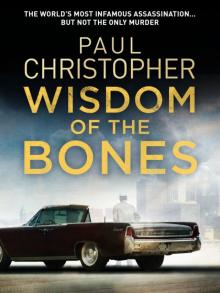 Wisdom of the Bones
Wisdom of the Bones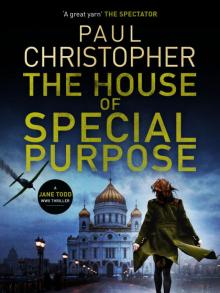 The House of Special Purpose
The House of Special Purpose The Second Assassin
The Second Assassin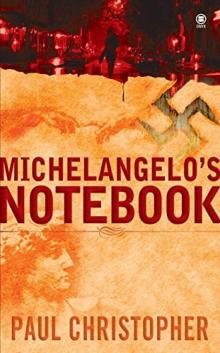 Michelangelo's Notebook
Michelangelo's Notebook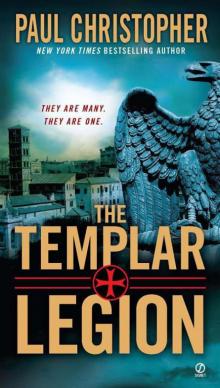 Templar Legion
Templar Legion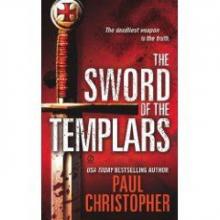 The Sword of the Templars t-1
The Sword of the Templars t-1 Red Templar
Red Templar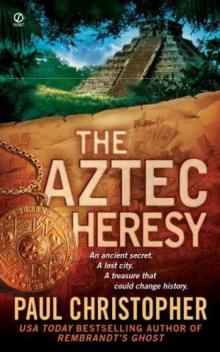 The Aztec Heresy
The Aztec Heresy The Templar Legion
The Templar Legion Rembrandt's Ghost
Rembrandt's Ghost Sword of the Templars
Sword of the Templars The Templar throne t-3
The Templar throne t-3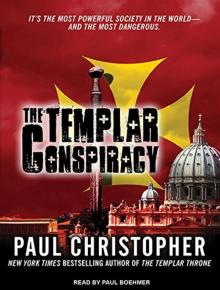 The Templar Conspiracy
The Templar Conspiracy The Templar Cross t-2
The Templar Cross t-2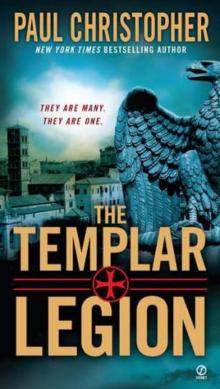 The Templar Legion t-5
The Templar Legion t-5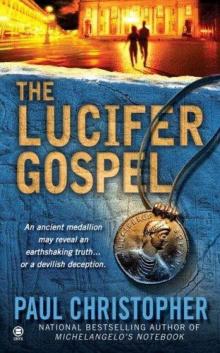 The Lucifer Gospel
The Lucifer Gospel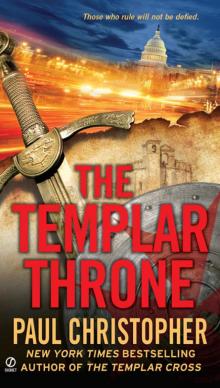 Templar Throne
Templar Throne Michelangelo_s Notebook fr-1
Michelangelo_s Notebook fr-1 The Lucifer Gospel fr-2
The Lucifer Gospel fr-2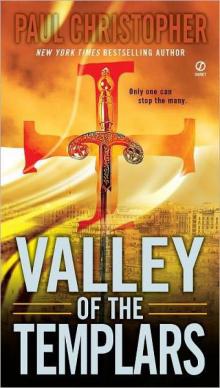 Valley of the Templars ts-7
Valley of the Templars ts-7 Valley of the Templars
Valley of the Templars Templar Cross
Templar Cross The Templar Throne
The Templar Throne The Templar Cross
The Templar Cross Lost City of the Templars
Lost City of the Templars The Templar conspiracy t-4
The Templar conspiracy t-4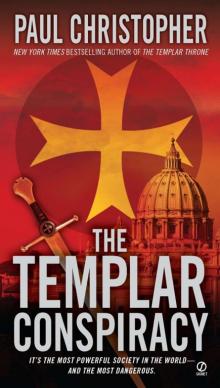 Templar Conspiracy
Templar Conspiracy